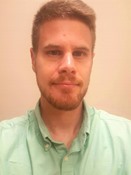Program Information
Impact of Contouring Variability On PET Radiomic Features
G Simpson*, F Yang , University of Miami School of Medicine, Miami, FL
Presentations
SU-F-605-1 (Sunday, July 30, 2017) 2:05 PM - 3:00 PM Room: 605
Purpose: Radiomic texture features extracted from oncologic PET images are currently under intense scrutiny within the context of patient stratification and treatment outcome prediction for a variety of cancers. However, the lack of robustness assessment poses problems for application across institutions and broader patient populations. The objective of the current study was to evaluate the extent to which radiomic features vary because of manual tumor delineation.
Methods: 26 synthetic lung PET data sets were created using an anthropomorphic phantom and Monte Carlo simulation. From each lesion 26 texture features were extracted from the ground truth contour and from manual contours provided by 10 physicians. The interclass correlation (ICC) was calculated for the difference from ground truth for each feature. The ICC was used to evaluate the level of agreement for the texture features based on the physician contours. After picking the features with a lower confidence bound of r > 0.9, a leave p-out choose k average analysis was performed until only combinations of only 3 physician contours remained.
Results: The average ICC for all features ranged from r = 0.84 to r = 0.951 while ranged from 0.920 to 0.976 for GLCOM-based features (contrast, homogeneity, dissimilarity), from 0.758 to 0.927 for GLSZM-based features (ZP, LGZE, HGZE, SZLGE), and from 0.924 to 0.977 for GLNDM-based features (contrast, complexity). The top features ranged from r = 0.954 to r = 0.986. After our leave p-out choose k average analysis of top performers, GLNDM were least affected by the number of physicians, while GLCOM ICC decreased moderately faster, and GLSZM dropping off rapidly.
Conclusion: Radiomic texture features depend upon manually drawn physician contours to different degrees. Our study indicates that for 9 of the features studied 6 physicians would be enough to remove uncertainty due to contouring variability.
Contact Email:
